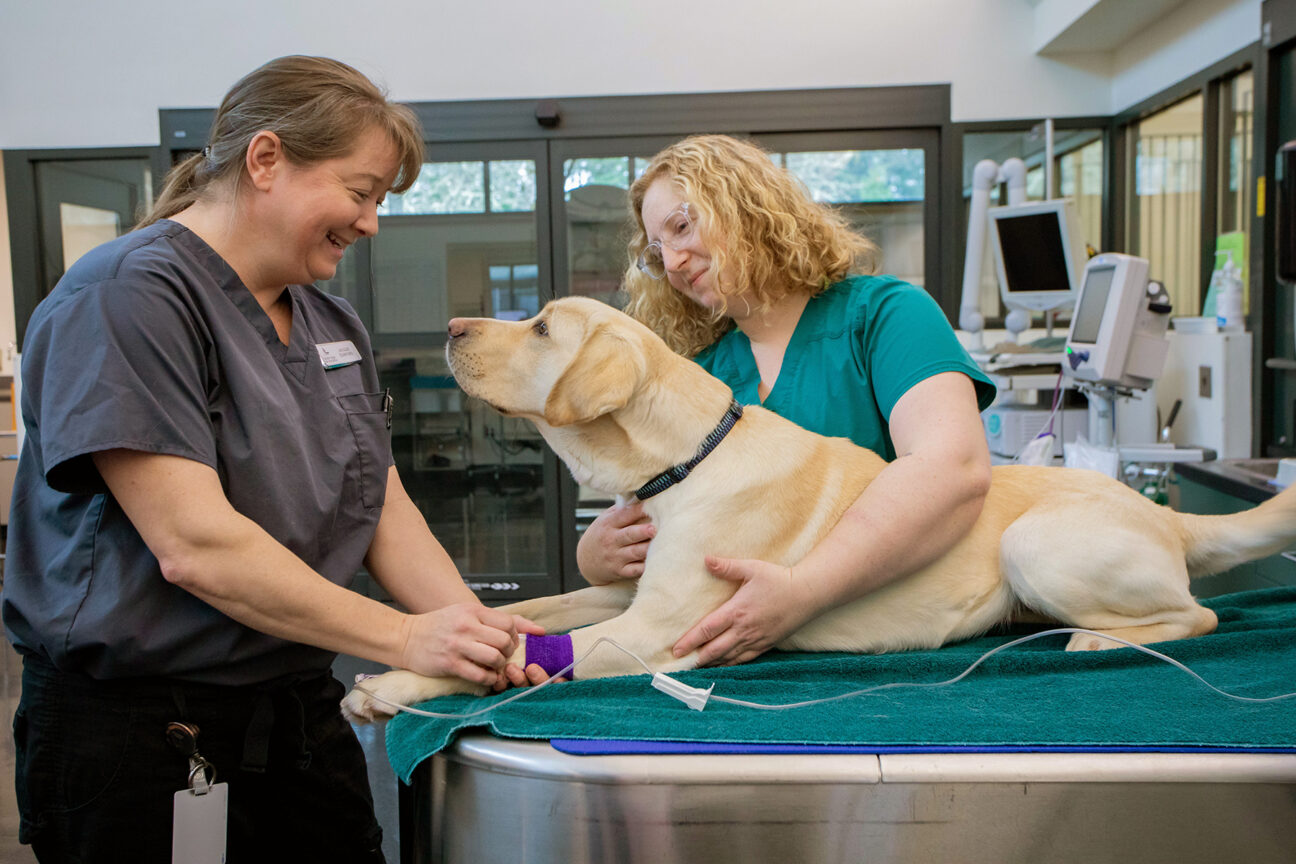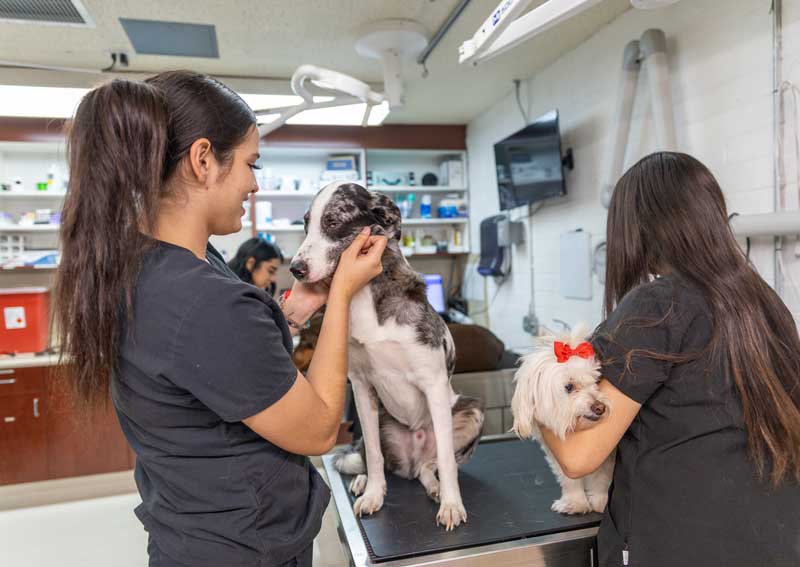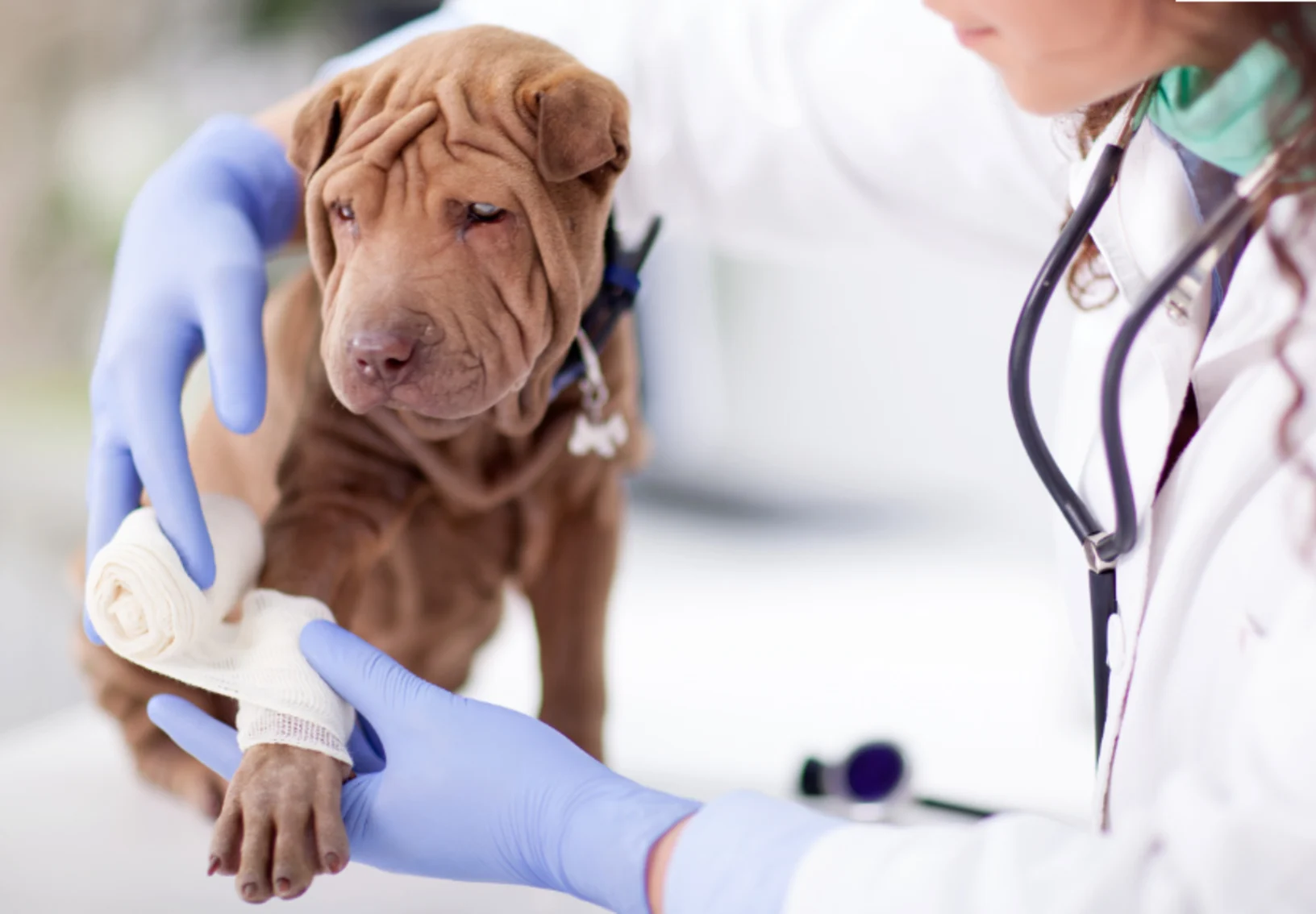Signs Your Pet's Condition Is Serious Enough for an emergency vet
Signs Your Pet's Condition Is Serious Enough for an emergency vet
Blog Article
Why Animal Rehab Is Essential: the Advantages of Vet Solutions for Your Animal's Recovery
Pet recovery is an essential part of healing for animals dealing with injuries or impairments. Vet solutions give crucial assistance through tailored rehab plans that deal with individual needs. These plans commonly include discomfort management, physical therapy, and nutritional advice. Understanding the various elements of animal rehab can brighten its value in enhancing recuperation end results. What particular advantages do these services offer, and exactly how can they transform a pet dog's recovery trip?
Understanding Animal Rehab
Pet recovery incorporates a series of restorative practices aimed at recovering the health and wellness and performance of hurt or disabled pets. This field incorporates numerous methods, including physical therapy, hydrotherapy, and work treatment, customized to satisfy the specific requirements of each animal. Recovery professionals examine a pet's condition, creating individualized therapy plans that may entail workouts to enhance muscles, enhance mobility, and boost total well-being. The process not only concentrates on physical healing yet likewise addresses emotional and behavioral aspects. Animals often experience stress and anxiety complying with an injury, making psychological wellness considerations crucial in rehab. By creating a supportive environment, specialists can aid animals reclaim their confidence and adjust to their new scenarios. Through normal sessions, animals can experience significant enhancements, ultimately causing a better lifestyle. In general, comprehending animal rehabilitation highlights its relevance in promoting recovery and boosting the bond in between pet dogs and their owners.
The Function of Discomfort Monitoring in Recovery
Just how vital works discomfort monitoring in the healing of damaged animals? It plays an essential duty in assisting in recovery and enhancing the general health of animals. Correct discomfort management not only minimizes discomfort however additionally advertises mobility, enabling pets to join rehab tasks necessary for recuperation. When pain is properly taken care of, pets tend to respond positively to therapy, bring about quicker recovery outcomes.Veterinarians make use of different approaches to assess and resolve pain, including drugs, acupuncture, and alternative treatments. By tailoring discomfort administration methods to the specific requirements of each animal, veterinarians can guarantee that animals continue to be tranquil and participating throughout their healing journey. In addition, decreasing discomfort assists reduce anxiety, which can inhibit healing and extend healing times. To summarize, effective pain monitoring is essential for enhancing the recuperation process and boosting the lifestyle for injured animals.
Physical Therapy Techniques for Pet Dogs
Many physical therapy strategies are available to aid in the rehab of family pets recuperating from injuries or surgeries (emergency vet bellingham). These methods can improve wheelchair, relieve pain, and promote recovery. Therapeutic workouts, as an example, help reinforce muscular tissues and improve joint function, permitting animals to regain their physical capabilities gradually. Manual treatment, which consists of massage and mobilization, can ease stress and enhance circulation, contributing to a faster recovery.Other techniques such as passive variety of movement workouts urge joint adaptability and minimize stiffness. In addition, electric excitement therapy may be used to promote nerves and muscular tissues, promoting recovery and pain relief.Veterinary experts frequently customize these methods per pet dog's specific demands, guaranteeing a detailed recovery strategy. By applying these physical treatment methods, pet dogs can experience enhanced top quality of life and an extra effective recovery from their conditions. The assimilation of these practices into rehab programs is vital for suitable recovery results
Benefits of Hydrotherapy for Rehabilitation
Hydrotherapy provides substantial benefits in pet rehab, especially in enhancing movement. This water-based treatment promotes discomfort alleviation while providing comfort to wounded or recovering pet dogs. Furthermore, it facilitates strength-building exercises that add to general physical recovery.
Boosted Wheelchair Improvement
As animals recuperate from injuries or surgeries, improved wheelchair typically becomes a primary objective of their rehabilitation. Hydrotherapy acts as a useful tool in attaining this goal. Through water-based workouts, pets can involve in low-impact activities that help with joint mobility and strengthen muscular tissues without the stress and anxiety of weight-bearing activities. The buoyancy of water supports their bodies, enabling boosted series of motion and mobility renovation. Furthermore, hydrotherapy motivates much better balance and coordination, which are crucial for bring back normal movement patterns. Normal sessions can bring about substantial development in a pet's physical capacities, eventually boosting their high quality of life. This method not just help in recovery yet additionally advertises an extra active and fulfilling way of life post-rehabilitation.
Discomfort Relief and Convenience

Relief from pain is an important element of pet rehabilitation, and hydrotherapy greatly contributes to this procedure. By utilizing water's buoyancy, hydrotherapy lowers joint stress and reduces discomfort during motion. This restorative strategy gives a relaxing atmosphere where pet dogs can participate in mild exercises without the full weight of their bodies influencing their healing. The cozy water promotes blood circulation, advertising healing while additionally encouraging relaxation. In addition, hydrotherapy sessions can be customized to meet the specific demands of the pet, guaranteeing suitable convenience. As pet dogs experience lowered pain and boosted comfort degrees, their overall willingness to participate in rehab tasks often boosts, bring about a much more effective healing trip. Consequently, hydrotherapy functions as a crucial tool in improving discomfort alleviation and convenience throughout rehabilitation.
Toughness Building Exercises
Strength-building exercises play an important duty in the recovery process, with hydrotherapy offering unique benefits. This kind of therapy uses water resistance to improve muscular tissue stamina without placing extreme stress on the joints. The buoyancy of water sustains the pet dog's weight, enabling safer motion and raised variety of movement. Additionally, hydrotherapy can boost cardio health and wellness and advertise total fitness, aiding in quicker healing from injuries or surgical procedures. The regulated atmosphere also minimizes the threat of reinjury, making it an excellent option for pets calling for recovery. Normal hydrotherapy sessions can result in obvious renovations in flexibility, toughness, and endurance, eventually enhancing the pet's lifestyle and ability to go back to normal activities.
Relevance of Custom-made Rehab Plans
Customized rehab plans are essential for dealing with the special demands of each pet, making sure customized treatment approaches. These strategies allow for efficient progress monitoring and essential adjustments, cultivating suitable recuperation end results. Furthermore, an alternative strategy can enhance the total wellness of the pet, promoting a more comprehensive rehab experience.
Individualized Treatment Approaches
While several recovery programs adopt a one-size-fits-all method, the distinct needs of each animal demand individualized treatment strategies for perfect healing. Personalized rehab strategies consider various aspects, including the pet's species, age, case history, and specific injuries or problems. By tailoring treatments, veterinarians can address each family pet's unique obstacles, maximizing the effectiveness of the rehab more info process. Embellished plans may incorporate various methods such as physical treatment, hydrotherapy, and healing exercises, guaranteeing that the therapy lines up with the pet's capacities and development. In addition, tailored techniques promote a stronger bond between the pet dog and the caregiver, advertising a more interesting and supportive recuperation setting. Eventually, individualized treatment is vital for attaining best possible outcomes in animal rehab.
Progression Monitoring and Adjustments

Holistic Recuperation Methods
All natural healing techniques are essential for efficient animal rehab, as they emphasize the relevance of individualized therapy strategies tailored per pet's particular demands. This technique thinks about the physical, psychological, and environmental variables affecting recovery. Personalized rehabilitation strategies might include a combination of physical therapy, nutritional therapy, and behavior adjustments. By attending to these varied aspects, veterinarians can boost the general health of the pet and promote a much faster recovery. Such tailored approaches promote a deeper understanding of the animal's special obstacles, leading to much more reliable treatments. Eventually, holistic healing methods not only enhance physical wellness yet additionally add to the animal's psychological and psychological stability, guaranteeing an extensive rehab experience.
The Influence of Nutrition on Recuperation
Nourishment plays a vital function in the healing procedure for restoring animals, frequently establishing the rate and effectiveness of recovery. A healthy diet plan gives the needed nutrients that support tissue fixing, improve the immune system, and boost general vitality. Protein is particularly crucial, as it assists in muscle mass restoring and recuperation from injuries. Essential fats, vitamins, and minerals likewise contribute to lowering swelling and promoting optimal cellular function.Veterinarians often emphasize the relevance of customized nutrition plans, considering each pet's particular requirements, age, and wellness standing. Proper hydration is just as crucial, as fluids help with nutrition absorption and aid in detoxification. By making sure that pets get proper nutrition, caretakers can considerably enhance their possibilities of a successful healing, leading to better lasting wellness results. Inevitably, nutrition offers as a fundamental element in the rehabilitation journey, supporting animals in restoring strength and strength post-injury or ailment.
Success Stories: Pets Who Thrived After Recovery
Effective rehabilitation stories are plentiful, showcasing the strength of pets who have actually overcome significant difficulties. Take, as an example, Bella, a gold retriever that endured severe injuries from a car crash. With dedicated veterinary care and a thorough rehabilitation program, she restored her mobility and returned to her playful self, much to her owner's joy. Max, an elderly feline identified with joint inflammation, experienced impressive improvement through a combination of physical treatment and pain administration. His newfound agility allowed him to appreciate his favorite sunbathing places once again. An additional inspiring instance is that of Coco, a rescued greyhound that overcame anxiety with therapy and socialization methods, allowing her to grow in her brand-new home. These success stories exemplify the transformative power of animal recovery, stressing that with the ideal support, pets can not only recuperate yet lead meeting lives, enriching the bonds they share with their families.
Often Asked Concerns
For how long Does the Rehabilitation Process Commonly Consider Family Pets?
The rehabilitation process for family pets usually varies based on the injury or problem, ranging from a couple of weeks to numerous months. Specific progress, therapy type, and dedication to workouts substantially affect the general period of recovery.
Exist Any Kind Of Dangers Associated With Animal Rehab?
Animal rehabilitation might bring threats such as exacerbation of injuries, improper strategies leading to discomfort, or not enough monitoring during recuperation. These aspects can hinder development and influence the general performance of the recovery process.

Can All Pets Take Advantage Of Rehabilitation Solutions?
Not all pets might require recovery, yet several can benefit greatly. Recovery solutions can boost mobility, alleviate pain, and boost overall well-being, especially for those recuperating from injuries, surgical treatments, or chronic problems.
Exactly How Can I Prepare My Pet for Recovery Sessions?

What Indicators Indicate My Family Pet Demands Recovery?
Indicators showing a pet dog might need rehabilitation consist of difficulty walking, limping, reduced activity degrees, unwillingness to leap, or signs of discomfort. Observing these actions can prompt proprietors to seek specialist analysis and therapy for their animals.
Report this page